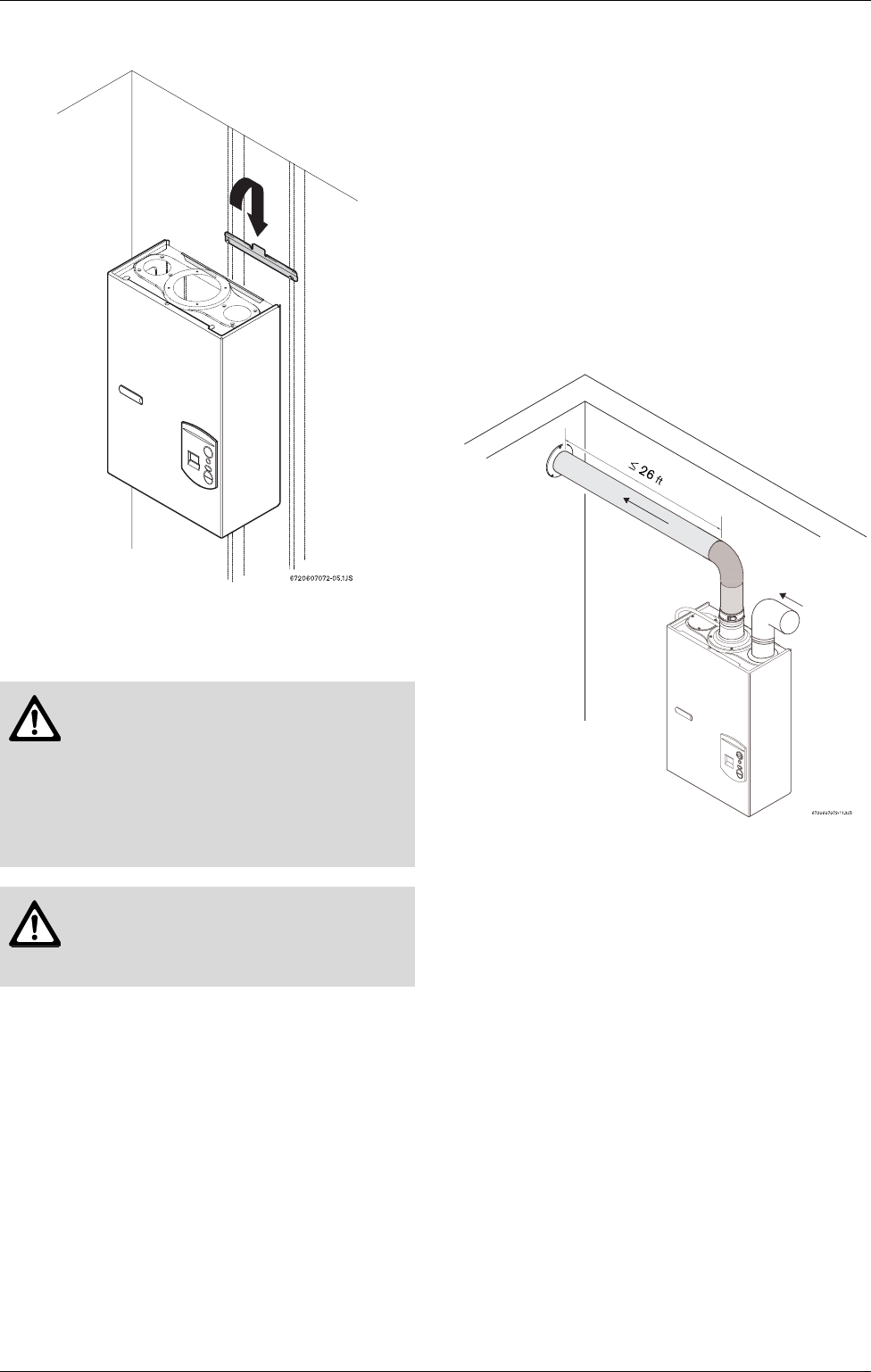
6 720 608 263
Installation instructions
9
Fig. 6 Mounting the heater
3.5 Combustion air requirements
Twin pipe method:
The 2400 E is designed as a sealed combustion
appliance. It is recommended that the combustion air
be provided by a dedicated 3” or 4” pipe to the outside.
The combustion air pipe may be aluminum flex, PVC or
any other rigid or semi rigid sealed 3” or 4” pipe. The
combustion air inlet, whether terminating vertically or
horizontally, must be located in such a manner as to
provide a minimum 3 foot clearance from the exhaust
vent terminator. See Fig. 17 Letter I.
The maximum length of the combustion air inlet is 26
feet with one elbow. Subtract 2.5 feet for additional
elbows. Maximum number of elbows permitted is 3.
Horizontally terminating combustion air pipes must
pitch down towards termination ¼ inch for every foot of
horizontal length.
Single pipe method:
Although it is permissible to draw combustion air from
the inside, it is not the manufacturer’s recommended
installation method. Always install a 3 inch elbow on the
top of the combustion air inlet adaptor to prevent
foreign objects from falling into the unit.
If a single pipe installation is utilized, follow guidelines
below for providing adequate combustion air for the
water heater as well as any other appliances that may
consume air in the space. Always follow local codes if
they are more stringent.
Fig. 7 Single pipe installation
The 2400 E water heater holds cold water in its copper
heat exchanger and water valve when not in use.
Because of this, any cold air that comes through the
unit's vent pipe could freeze and damage these
components. This Installation Manual specifies the
minimum vertical vent pipe and the amount of
combustion air required for this unit. When all
requirements are followed, the unit will operate properly
and safely. However, there may still be a risk of freezing
due to negative draft if the other combustion appliances
in the building are not supplied with sufficient
combustion air. A wood stove or furnace can pull its
combustion air from the heater's vent pipe, allowing the
cold incoming air to freeze the cold water in the heat
exchanger. Supplying more combustion air for all
combustion appliances is the solution. A HVAC
specialist should be consulted to design solutions for
providing more combustion air. Observe the following
guidelines:
Installations in structures that have been tightly
constructed (air infiltration rate of 0.40 ACH or less)
must be provided with combustion air per the National
Warning: In areas where outside
temperatures commonly fall below
36°F, a twin pipe venting system is
required. Failure to do so may result in
cold outside air being drawn across the
heat exchanger causing it to freeze and
burst. This failure is not covered under
the manufacturer’s warranty.
Warning: When installed in an
environment where corrosive chemicals
or dirty air are present, the twin pipe
system is required.


















